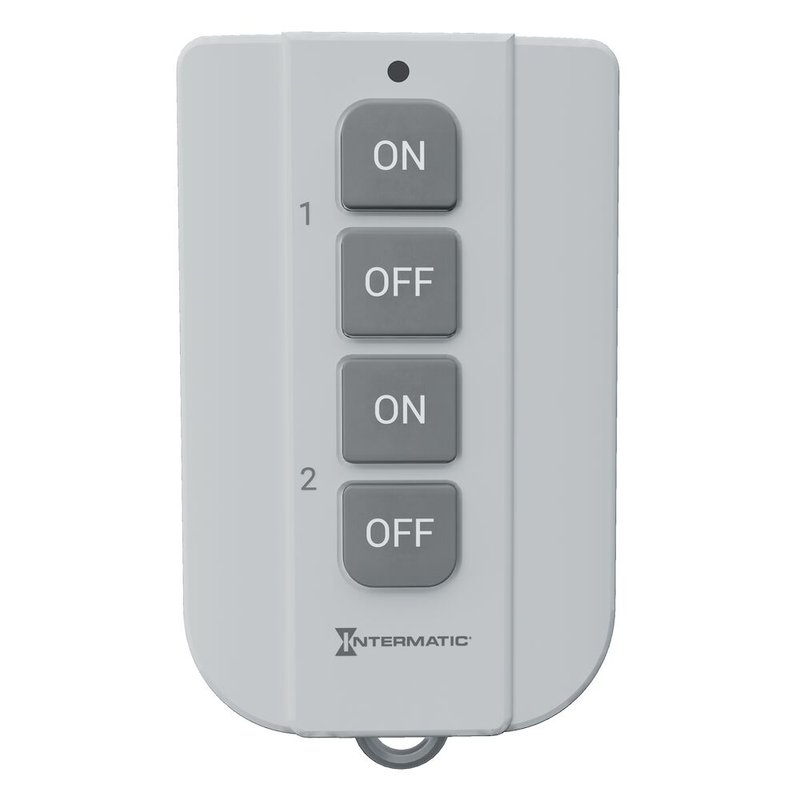
Intermatic remotes—often used for pools, spas, and outdoor lighting—are meant to make things easy. Tap a button, and your backyard comes alive. But when the remote disconnects or loses signal, that magic fades fast. Most of the time, these hiccups come down to a handful of predictable issues: battery trouble, signal interference, or sync problems. Let’s roll up our sleeves and walk through what you can do when your Intermatic remote just won’t behave.
Why Your Intermatic Remote Keeps Disconnecting
Here’s the thing: nothing kills convenience faster than an unreliable remote. With Intermatic remotes, a constant disconnect usually boils down to a few repeat offenders. Think of it like a relay race where one runner (the remote) keeps dropping the baton mid-stride.
Signal interference is a big culprit. These remotes rely on radio frequency (RF) signals to communicate with their receiver or control box. If there’s a thick wall, metal structure, or another electronic device nearby, it can scramble or block those signals. Picture trying to have a conversation across a noisy room—it gets garbled, and you miss half the message.
Battery issues are another classic. If your remote’s batteries are running low, you’ll get erratic performance: sometimes it’ll work, sometimes it won’t, and sometimes it disconnects without warning. Even if you think the batteries are fresh, it never hurts to swap them out and see if the problem goes away.
There’s also the possibility of sync or code mismatches. If your remote and receiver have slipped out of sync, or if you’ve accidentally reset the system, the remote may connect briefly—then disconnect. All these little details can turn a handy tool into a stubborn headache.
Check the Batteries First—Seriously
Let me explain why I always start here. It sounds silly, but even seasoned pool techs sometimes overlook the obvious. A weak battery can cause your Intermatic remote to lose signal, randomly disconnect, or fail to pair correctly with its receiver. It doesn’t have to be fully dead—just a little below optimal voltage can mess things up.
- Open the battery compartment: Most Intermatic remotes use a standard coin cell or AA/AAA batteries. Check for corrosion or loose contacts; these can disrupt the flow of power.
- Swap in fresh batteries: Even if the ones inside look fine, try new ones from a sealed package. Cheap or mismatched brands can sometimes cause voltage dips.
- Check the orientation: Batteries put in backward (it happens!) can lead to all kinds of weird behavior, including constant disconnects.
Honestly, nine times out of ten, a battery swap does the trick—especially if your remote was dropped, stored outside, or not used for a while. After replacing the batteries, try syncing or pairing the remote again before moving on.
Reduce Signal Interference and Obstructions
Wireless remotes like the Intermatic model depend on a clear path between the remote and the receiver. Obstacles—even ones you didn’t think mattered—can mess with the signal. Imagine you’re trying to shout instructions to someone in another room while the TV’s blaring and there’s someone vacuuming. The message probably won’t get through.
- Move closer to the receiver: Sometimes, simply standing right next to the control box can help. If it works up close but not far away, signal strength is likely the issue.
- Remove barriers: Thick concrete, metal fencing, and even water (like a big pool between you and the receiver) can block RF signals. Try holding the remote above obstacles, or reposition the receiver if possible.
- Avoid electronic “noise”: Things like wireless speakers, microwaves, or Wi-Fi routers nearby can cause interference. Try turning off other devices as a test.
If your Intermatic remote continues to disconnect only in specific locations, interference is probably to blame. Sometimes, even bright outdoor lighting or weatherproof covers on the receiver can affect signal quality. If repositioning things solves the problem, you’re good to go.
Re-Sync or Re-Pair the Remote and Receiver
You might be wondering, “Do I really need to pair or sync this thing again?” Here’s the deal: Intermatic remotes and receivers “remember” each other thanks to a matching code or pairing sequence. If that memory gets wiped—say, from a power outage, firmware upgrade, or manual reset—you need to reintroduce them.
- Locate the pairing/reset button: Most Intermatic receivers have a tiny button (sometimes hidden behind a panel or door). Grab a paperclip and press it in.
- Initiate pairing mode: Hold down the button until you see an LED light blink. This means the receiver is “listening” for a new remote.
- Press the remote’s primary button: With the receiver in pairing mode, press (and hold, if instructed) the remote’s ON or OFF button until the LED flashes or you hear a beep.
Follow the manufacturer’s steps precisely—codes and sequences might look simple, but a wrong press can force you to start over. If you see steady lights or hear a satisfying click, your remote and receiver should be back on speaking terms. Test the remote from various locations to make sure it’s holding the connection.
What If You Don’t Have the Manual?
Lost your Intermatic manual? You’re not alone. Usually, the pairing code steps are printed on a sticker inside the receiver or under the battery cover. If all else fails, Intermatic’s website often provides downloadable guides for common models. Just be sure you’ve got the right model number before following any instructions.
Reset Everything—When All Else Fails
Here’s where a full reset can save the day. Think of it as a “fresh start” for your Intermatic remote and control box—kind of like rebooting your phone when it acts weird. This process clears any lingering codes or pairing errors that might be causing the disconnects.
- Power-cycle the receiver: Switch off power at the breaker for 30 seconds. This ensures any software bugs get cleared out.
- Remove and reinstall remote batteries: Take out the batteries and wait a few seconds before popping them back in. This gives the remote a chance to fully reset.
- Repeat the pairing process: Once everything’s powered back up, pair the remote and receiver as if they were brand new.
A full reset usually solves stubborn problems that basic troubleshooting missed. If your Intermatic remote still disconnects after this, it might be time to consider the hardware itself.
Check for Damage or Faulty Hardware
Sometimes, the issue isn’t with code, pairing, or interference—it’s a physical problem. If your Intermatic remote was dropped in the pool (hey, it happens), exposed to harsh weather, or just feels “off” in your hand, it could be damaged. Water, heat, or old age can mess with the tiny circuits inside.
- Inspect for visible damage: Look for cracks, water spots, or corrosion inside the battery compartment. Even a little green fuzz on the contacts can create headaches.
- Check the buttons: If you have to mash the buttons for them to work, or they stick halfway, the remote might be worn out.
- Test with another remote: If you have a spare compatible remote, try syncing it. If the new remote works fine, your old one may need to be replaced.
If it turns out your remote is toast, don’t stress—you might be able to get a universal remote that works with your Intermatic receiver, or order the exact model as a replacement. Just double-check compatibility before buying anything new.
Consider Upgrading or Switching Remotes
Let’s be real: sometimes older remotes are more trouble than they’re worth. If your Intermatic remote keeps disconnecting even after all your troubleshooting, it might be time to consider an upgrade. Modern remotes often have better range, more reliable pairing, and improved battery life.
- Look into universal remotes: Some high-quality universal pool remotes can pair with a variety of receivers, including Intermatic models. Just make sure they’re compatible with your gear.
- Check out smart home options: Some new receivers let you control everything from your phone or a dedicated app—no more hunting for the remote or replacing batteries.
- Compare features: If you’re going to upgrade, look for a remote with good reviews, simple code syncing, and waterproof construction if it’ll live outdoors.
Upgrading is a bit of an investment, but if your current remote is driving you nuts, it’s money well spent for convenience and peace of mind.
Maintenance Tips to Prevent Future Disconnects
Consistency is key if you don’t want to deal with the headache of constant disconnects in the future. A few simple habits can keep your Intermatic remote running smoothly for years.
- Change batteries regularly: Don’t wait for things to stop working. Swap batteries every season, even if they still seem fine.
- Store indoors: Keep your remote in a cool, dry place when not in use. Heat and moisture are silent killers for electronics.
- Clean contacts and buttons: Gently wipe down the remote and battery contacts from time to time. Dust and grime can sneak in and cause problems over time.
- Re-sync after power outages: If you lose power, double-check that your remote is still talking to the receiver. Quick checks save headaches later.
Treat your remote with a little care, and you’ll avoid 90% of the issues that cause disconnects.
If your Intermatic remote keeps disconnecting, don’t panic—most issues have a fix that’s easier than you think. Start simple, work your way through the basic troubleshooting steps, and don’t be afraid to upgrade if you’re still facing trouble.
Finding the right fix for a constantly disconnecting Intermatic remote is usually a matter of patience and a little detective work. Whether it’s batteries, signal interference, pairing, or hardware issues, a steady approach wins the day. With a working remote, you’ll be back to enjoying your pool, spa, or lights without interruption—and maybe even appreciate those little moments of convenience a bit more.
